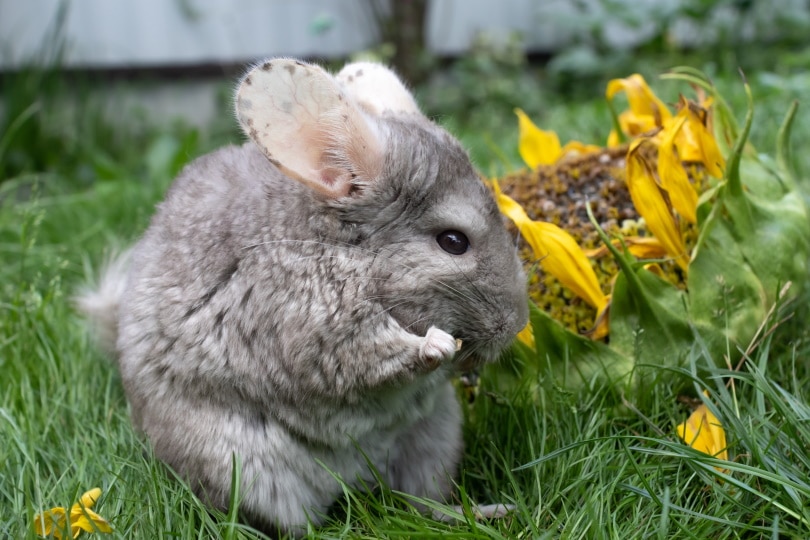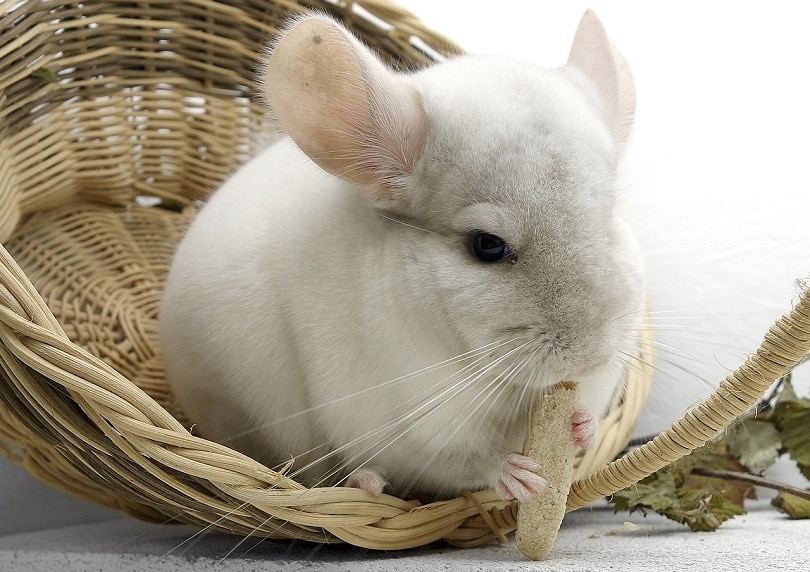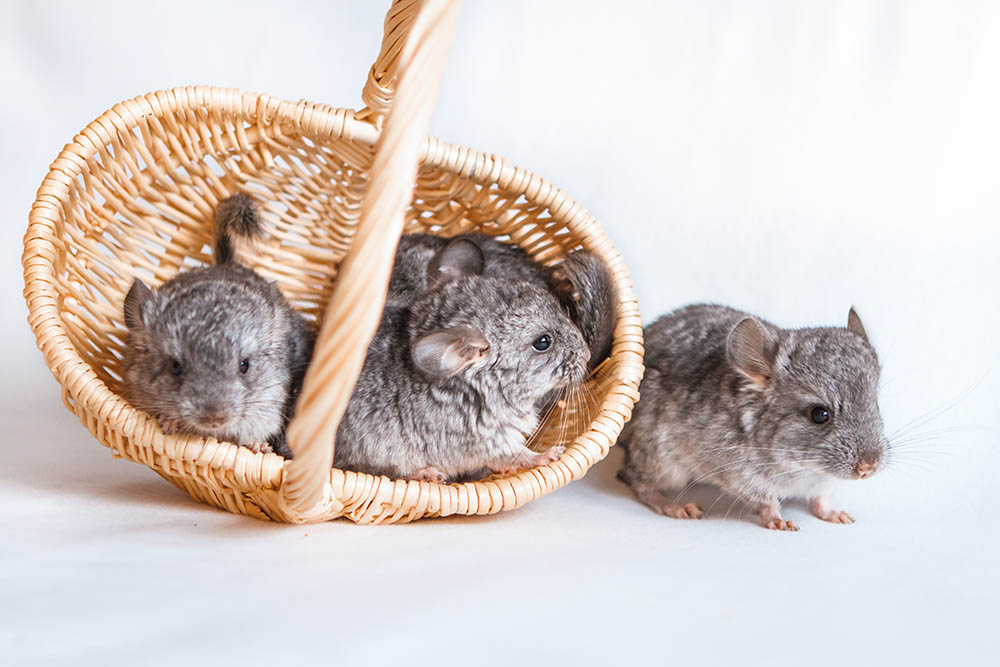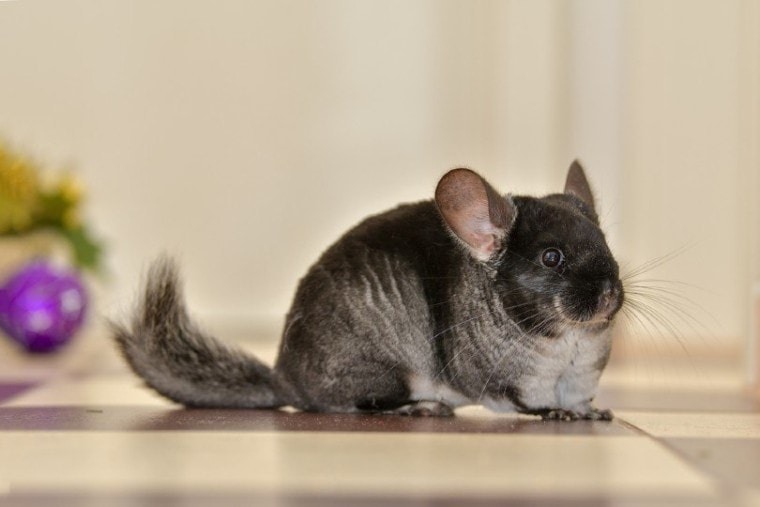
Chinchillas are native to western South America where they inhabit the rocky slopes of the Andes Mountains that have an elevation height of 9 to 15 thousand feet. At this height, it can get quite chilly, especially at night. Chinchillas are often most active in the evenings and nighttime; they will be exposed to the rapidly dropping temperatures during this time.
So, what is the lowest temperature chinchillas can tolerate, and what is their ideal temperature range? Chinchillas can easily adapt to gradual drops in temperature even lower than 32°F (0°C), but their preferred ideal is between 50 to 60°F (10 to 16°C). This article has all the details you will need!
How Cold Can Chinchillas Tolerate?
The lower range of temperatures a chinchilla can tolerate is between 25° to 32° Fahrenheit (-4°C to 0°C). They are able to tolerate this temperature assuming the temperature drops gradually, which is the norm in their natural habitat. Their dense fur coat allows for this adaptation.
However, it is unlikely that your home will ever reach such cold temperatures because it will be uncomfortable for you. Nonetheless, it’s best to avoid a sudden temperature fluctuation in your chinchilla’s environment.
The Andes Mountains temperature range is quite low all year round, in winter the average daytime temperature is below 50° Fahrenheit (10°C), whereas summer temperatures usually average around 68° Fahrenheit (20°C). The cooler temperatures are much more prominent near the peak of the mountains, but chinchillas will inhabit the lower areas where it is slightly warmer. The peaks of these mountains are covered in snow during the mid-winters and chinchillas will typically avoid inhabiting this area.
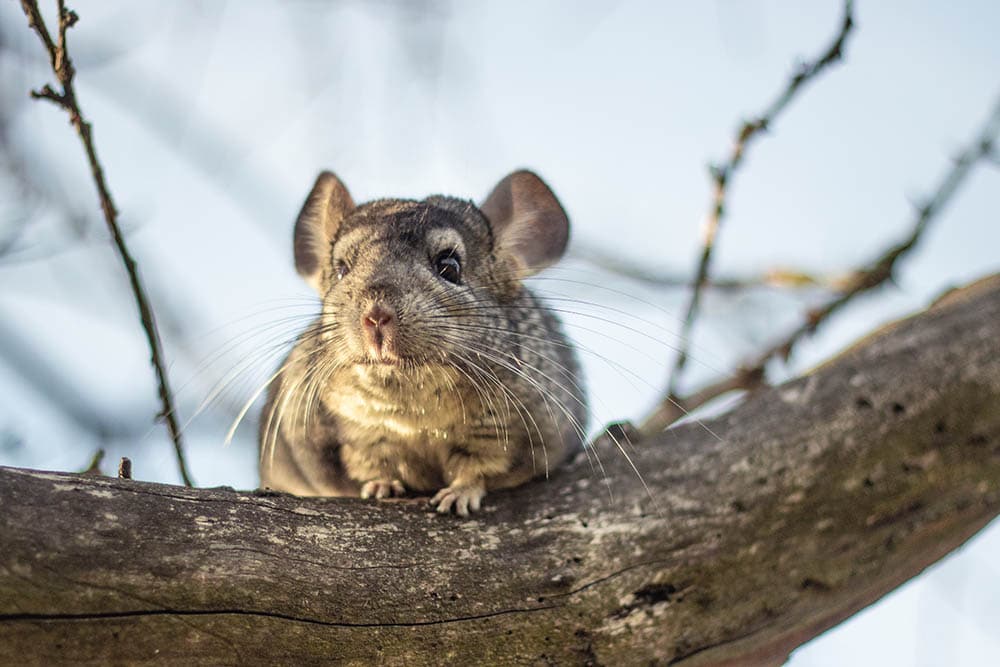
How Do Chinchillas Tolerate Such Cold Temperatures?
A chinchilla’s ability to tolerate cold temperatures is attributed to their dense fur coat, which is the densest among all land mammals. When chinchillas feel cold, their hair rises and traps air near their body, which is then warmed by the heat their body produces naturally. This helps them keep warm. This adaptation is akin to wearing a thick coat while you step outdoors in the winter. The coat offers you protection against the cold temperatures and the wind. Perhaps not surprisingly, temperatures lower than 65°F (18°C) and relative humidity lower than 50% promote the best rate and quality of fur growth in chinchillas.
In addition, chinchillas do not sweat, and therefore, they don’t lose body heat via this metabolic process. Their thick coats and the inability to sweat means that while they tolerate cold temperatures relatively well, their tolerance for warmer temperatures and high humidity is very poor.
Their coat stays thick throughout all seasons, and moisture or drafts can mess with the chinchilla’s temperature regulation. For this reason, you should avoid bathing your chinchilla or keeping the enclosure in draft areas where they are exposed to strong winds.
Chinchillas will ‘bathe’ in dusty volcanic ash to help evenly distribute their natural oils. These natural oils not only help keep your chinchillas coat soft and shiny but also helps to remove dirt and debris that can prevent them from temperature regulation. In captivity, you should purchase chinchilla bathing sand to replicate this.
Alternatively, you can make a dust bath for them with a mixture of silver sand and Fuller’s earth in a 9:1 ratio. This means there are nine parts silver sand to every one part of Fuller’s earth. For example, to prepare a 100-gram mixture of this ratio, you would need 90 grams of silver sand and 10 grams of Fuller’s earth.
Can Chinchillas Be Kept Outside?
It is best to avoid keeping your chinchilla outside for a variety of reasons. Keeping your chinchilla outdoors may expose them to elements that they are not naturally adapted to. Likely, you do not live in the Andes Mountains or even in the same area chinchillas originate from. Your area’s temperature may be unnatural and uncomfortable for your chinchilla, especially if they are kept outdoors where the shelter of your home cannot protect them.
Furthermore, the harsh sun and rain can negatively affect them which can put your chinchilla in a state of discomfort. Predators and harmful plants or seeds can also enter your chinchilla’s habitat and cause further problems.
It is recommended to keep your chinchilla indoors away from an open door or window, where they are sheltered from the elements and potential predators. Their environment should be dry, free of drafts, moderately cool, and away from direct sun.

What Happens if a Chinchilla Gets Too Cold?
Hypothetically, if a chinchilla were to get too cold, they would respond in the same way as many other mammals do in such a scenario. Initial bodily responses would be to conserve heat (using their fur) and then to generate more heat (often in the form of shivering). However, the odds of a chinchilla getting too cold in captivity are extremely low, and, if temperatures fall to a point where a chinchilla is too cold, the same temperature would be very intolerable for humans.
In experimental circumstances, chinchillas are able to regulate their body temperature even in temperatures as low as 14°F (-10 °C) without any signs of hypothermia. The calculated hypothetical lethal temperature for chinchillas is a staggering -85 °F (-65 °C) 1. In comparison, the lowest temperature a human can survive in is around -26 °F (-32°C).
Can Chinchillas Go in Snow?
You may have seen the adorable videos of chinchillas running through the snow on the internet; however, it is not recommended to do this. While the snow itself might not be an issue for them, tolerance-wise, the snow can eventually melt once they’re brought indoors, and this can lead to their coats getting wet.
In the wild, chinchillas will usually not interact with snow, and they would much rather be huddled with their colony in a burrow than play in the snow.
If your chinchilla stays indoors and it is snowing outside where you live, it should not be a problem for your chinchilla if no drafts or snow can reach them.
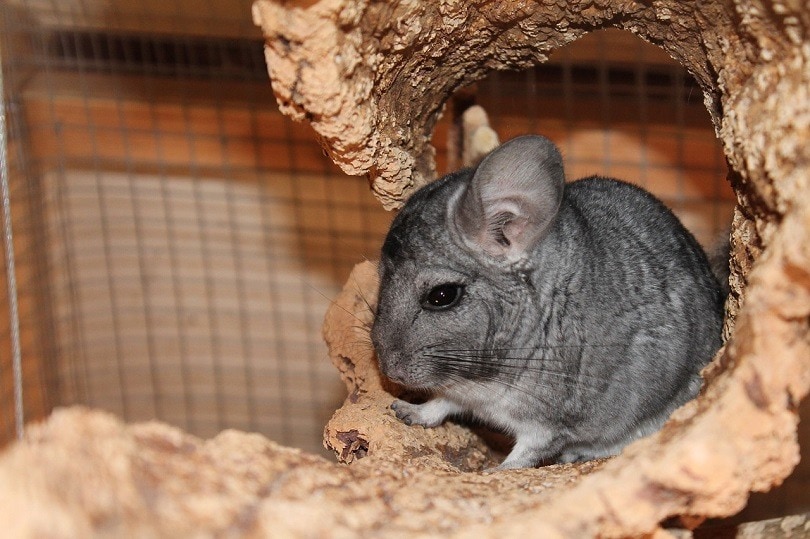
Chinchilla Temperature Requirements
A comfortable temperature for a chinchilla is 50 to 60°F (10 to 16°C). This is not too cold nor hot for them and is the typical house’s temperature range all year round. They prefer a humidity level lower than 50%.
Due to their dense fur coats, they do not tolerate high temperatures well. This makes it essential to keep their enclosure in a cool, dry place away from direct sunlight.
Conclusion
Temperature is a really important factor to consider if you want your chinchilla to thrive in captivity. Measures should be put in place to help them overcome intense heat and humidity, or drafts and extremely cold temperatures. Chinchillas may be sensitive to temperature changes, but it is easy to fix any temperature problems with some adjustments.
It may also be a good idea to keep a thermometer and hygrometer in the same room as your chinchilla so that you can keep track of any temperature or humidity changes.
- Related Read: What Happens if Chinchillas Get Wet?
Featured Image Credit: ATTILA Barsan, Shutterstock




